
April 10, 2024 | Daily JAM, Long Term |
Fitch Ratings revised China’s outlook to negative from stable. The Big 3 rating company (along with Standard & Poor’s and Moody’s Investor Services) said the government is likely to pile on debt as it seeks to pull the economy out of a real estate-driven slowdown.The Fitch announcement matches a similar warning from Moody’s Investors Service in December. China’s public debt has risen rapidly over the past dozen years or so, as the government pumped money into the economy in order to prop up economic growth. To end a now years-long property slump, the government has already outlined new stimulus measures—like subsidies for households and businesses that want to upgrade appliances or machinery— and signaled that more will follow.Public debt was close to 80% of gross domestic product as of the middle of last year, roughly double the level of the mid-2010s, according to the Bank for International Settlements.
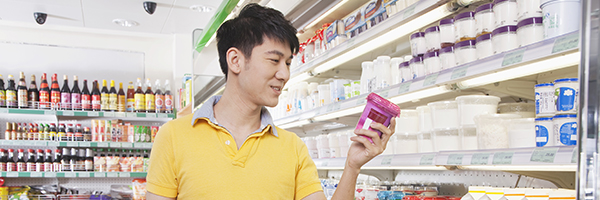
December 11, 2023 | Daily JAM, Morning Briefing |
China slipped back into deflation in October, according to government data released over the weekend. China had shown a recovery from August deflation in September readings, but that recovery now looks temporary. As worrying as the deflation tag itself is the cause: week domestic demand.

November 22, 2023 | Daily JAM |
China’s financial regulators are drafting a list of 50 developers eligible for a range of financing. In addition China’s biggest banks, brokerages and distressed asset managers have been told were to meet all “reasonable” funding needs from property firms. Plus the People’s Bank is trying to move up lending plans for the year and to provide at least 1 trillion yuan ($137 billion) of low-cost financing to the nation’s urban village renovation and affordable housing programs. Seems like a lot of money. And it is. But it may not be enough.

November 1, 2023 | Daily JAM |
Anyone who has followed China’s economy or invested in the country’s stocks is righty skeptical of all of the country’s economic data. The GDP growth numbers, for example, always seem to come in near target even when other measures show that the economy has hit a pothole. But right now, when the country faces a huge employment crisis and millions of migrant workers have no jobs and no safety net and millions of recent college graduates can’t find work, we know that the official numbers are a crock of chicken manure. And how do we know this? Because the Chinese government tells us so.
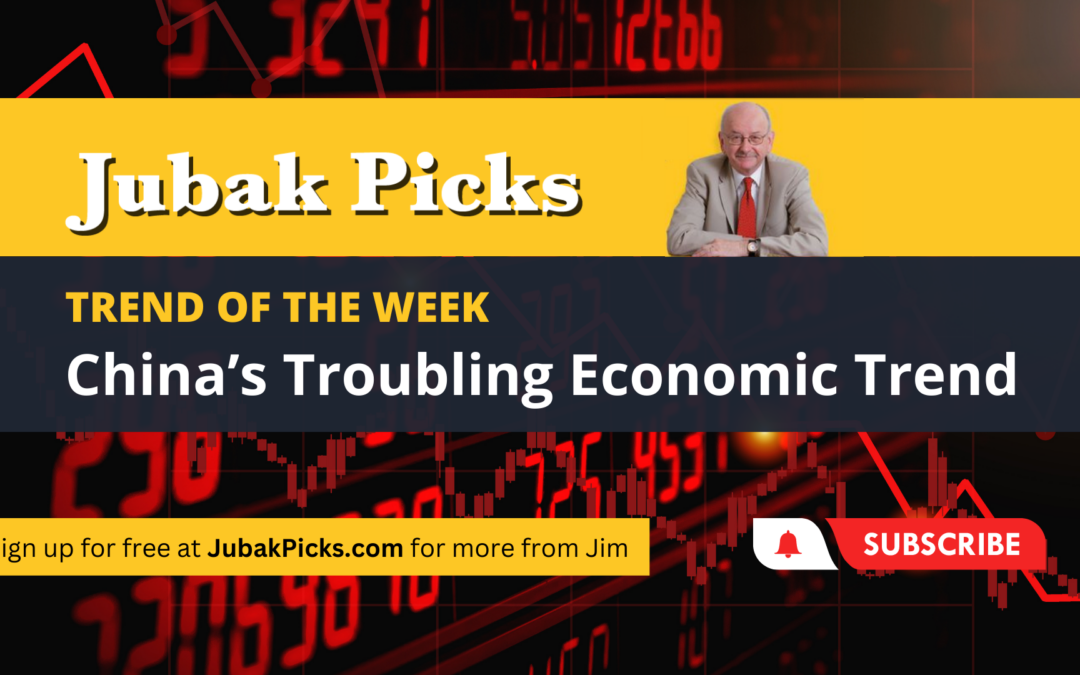
June 26, 2023 | Daily JAM, Long Term, Videos |
Today’s Trend of the Week is China’s Troubling Economic Trend. This graduation season is highlighting the economic problems China is facing. The 16-24-year-old Chinese demographic went to college as a way of delaying entering the job market during COVID, with the expectation of a guaranteed job upon graduating. The bad news is those jobs have not materialized. Unemployment for the 16-24 year age group was up to 20.8% in May, even higher than April’s shocking number. These Chinese college graduates have recognized this problem and have started a movement called “lying flat.” These potential consumers, they say, will not be buying houses, or cars but instead, will cut consumption. This negative view of the future trend in the economy has spread to all demographics and has led to people hoarding cash. The People’s Bank of China has cut short-term interest rates and the state council has suggested another stimulus package is coming. These factors could give Chinese stocks a bump up, but won’t get to the heart of the economic problem or bring the country’s growth above 5%. I’ve switched my international diversification to South Korea from China on JubakAM.com because I believe this economic trend is a long-term issue and that these problems are deeply embedded in the Chinese economy.
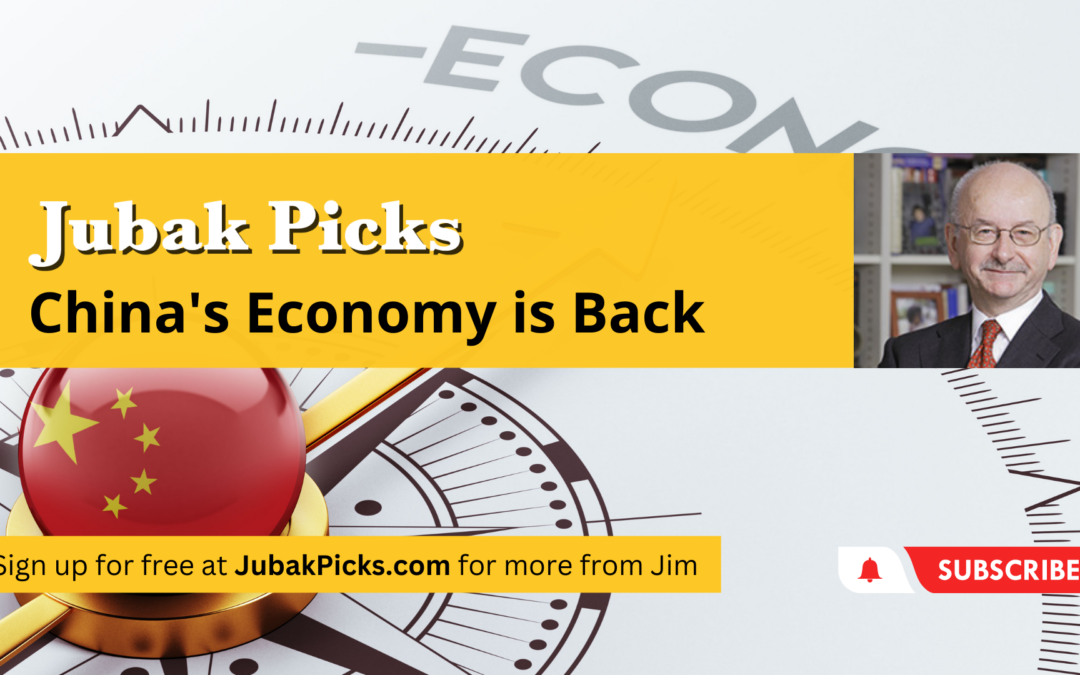
April 19, 2023 | BABA, Daily JAM, FXI, JD, Videos |
Today’s topic is China’s Economy is Back. On April 18, China reported 4.5% year-over-year GDP growth for the first quarter. While it wasn’t the 5% growth rate that the Chinese government has set as a target, it was better than the 4% forecast by economists. This growth rate comes on the heels of a 4th quarter with only 2.9% year-over-year growth. Other numbers showed strength too. For example, retail sales rose 10.6% year-over-year beating forecasts of 7.4%. But the economy isn’t cooking on all burners: Industrial production was up only 3.9%, just missing the forecasts of 4%. The iShares China Large-Cap ETF (FXI) is a good way to buy into China’s economy. There was a big rally from November to December as investors anticipated China’s economy speeding out of its Covid slump. But that rally was followed by a drop as the Chinese economy struggled with a resurgence in Covid cases. Now we’re seeing that drop start turn around. Individual stocks like Alibaba (BABA) and JD.com (JD) show charts with a similar pattern and can be expected to start to climb as the economy continues to pick up.

April 18, 2023 | Daily JAM, Mid Term |
China’s economy grew at a faster-than-expected pace in the first quarter. Gross domestic product grew 4.5% year-on-year in the first three months of the year, data from the National Bureau of Statistics (NBS) showed on Tuesday, faster than the 2.9% in the previous quarter. It beat analyst forecasts for a 4.0% expansion and marked the strongest growth in a year. But investors in Asian financial markets reacted with disappointment
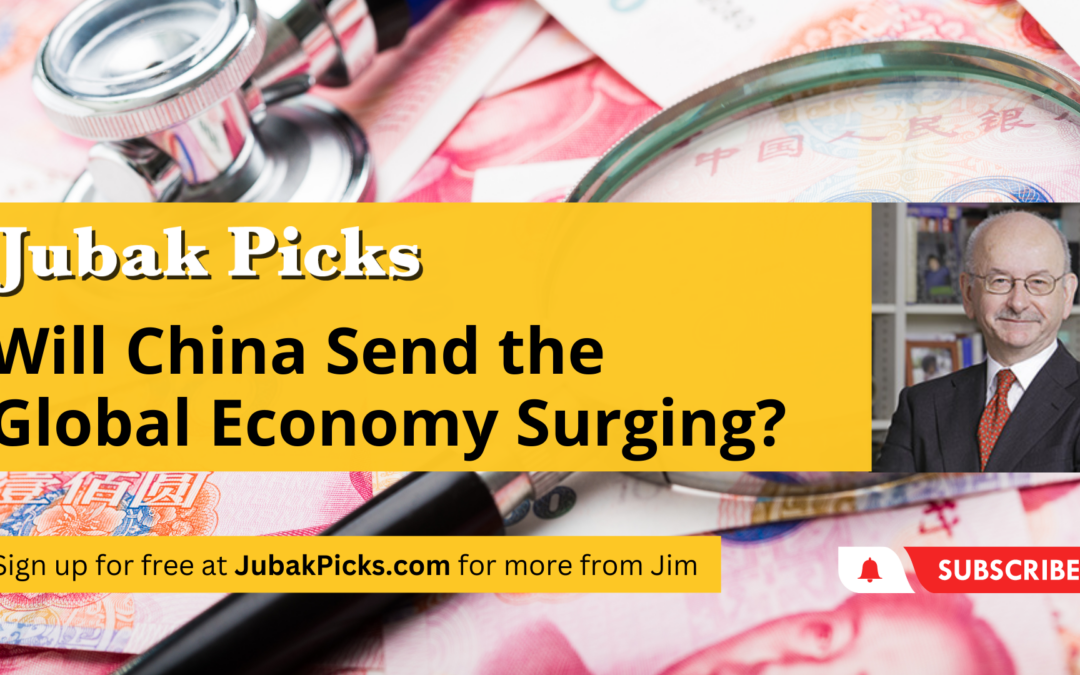
March 1, 2023 | Daily JAM, FXI, Perfect Five-ETFs, Videos |
Today’s topic is Will China Send the Global Economy Surging? We’ll really know the answer to this starting on Sunday, when the National People’s Congress of China meets. The leaders of China will make some important decisions for the Congress to rubber-stamp. China is looking for a 5% or higher GDP growth this year after last year’s 3%, but in order to get there, they’ll have to stimulate the economy. Local governments are drowning in debt that they can’t pay, and the government’s usual stimulus plan of requiring local governments to borrow and then spend it on “infrastructure “, isn’t likely to work. There’s also added pressure to cut interest rates to stimulate the economy and the rising tide (albeit a very low tide) of disgruntlement of the government and Xi Jinping’s leadership throughout the Covid lockdowns and the subsequent deadly spread of Covid-19. All this while the population is aging dramatically (with little to no retirement infrastructure), following the one-child policy, which reduced the younger population drastically. To take advantage of the expected and necessary economic stimulus, I recommend the iShares China Large-Cap ETF (NYSEARCA: FX) which captures a lot of the state-owned and larger corporate companies that would likely benefit from a stimulus from China. You’ll find it in my Perfect 5 ETF Portfolio.

February 28, 2023 | Daily JAM, Mid Term, Morning Briefing |
The debt crisis at China’s local governments will be top of the agenda when China’s leaders gather in Beijing for the annual parliament next week.m (The nation’s legislators and top leaders meet from this Sunday to approve key economic targets for 2023, including a new local bond quota, the budget, and also monetary policy.) A majority of regional governments — at least 17 out of 31 — are facing a serious funding squeeze, with outstanding borrowing exceeding 120% of income in 2022
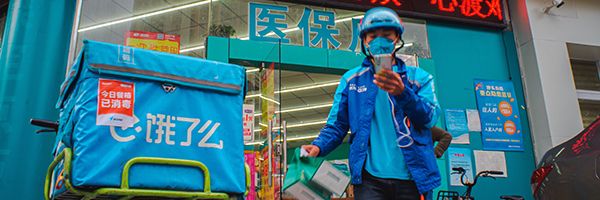
December 12, 2022 | BABA, Daily JAM, FXI |
Just days after China’s government unwound its 0-Covid policy and eased lockdowns much earlier than expected, the country is seeing a surge of infection that already threatens to overwhelm hospitals. “The speed of changes on the ground has surprised many, including us,” Goldman Sachs Group Inc.’s chief China economist Hui Shan wrote in a note Sunday. “Not even a month ago, official outlets were still emphasizing that ‘20 measures’ were about optimizing the implementation of dynamic zero-Covid policy, rather than abandoning it. A few short weeks later, many controls are removed, and the virus seems to be spreading quickly among the population.” It’s unclear how quickly new cases are climbing

November 22, 2022 | Daily JAM, Morning Briefing |
On Monday China reported 28,127 new domestically transmitted Covid cases on Monday as the country neared its April peak. Infections in the southern city of Guangzhou and the southwestern municipality of Chongqing accounted for about half the total. In Beijing, cases have hit new highs every day, prompting calls from the city government for more residents to stay in place and show proof of a negative COVID test, not more than 48 hours old, to get into public buildings. Beijing shut parks and museums on Tuesday. Late on Tuesday, Shanghai announced that from Thursday people may not enter venues such as shopping malls and restaurants within five days of arriving in the city, although they can still go to offices and use transport. Earlier, the city of 25 million people ordered the closure of cultural and entertainment venues in seven of its 16 districts after reporting 48 new local infections. So much for hopes of a quick reopening of China’s economy.

August 17, 2022 | BABA, Daily JAM, Jubak Picks, TCEHY, Volatility |
When I added Alibaba (BABA) to my Jubak’s Picks Portfolio on April 29, 2022, and Tencent Holdings (TCEHY) to my Volatility Portfolio on January 3, 2022, I thought two things were about to happen in China. First, I thought that the People’s Bank would unleash enough stimulus to more than compensate for the slowdown in China’s economy. And, second, I thought that we’d seen the end of the regulatory crackdown on China’s big entrepreneurial technology companies. I got both trends wrong.












